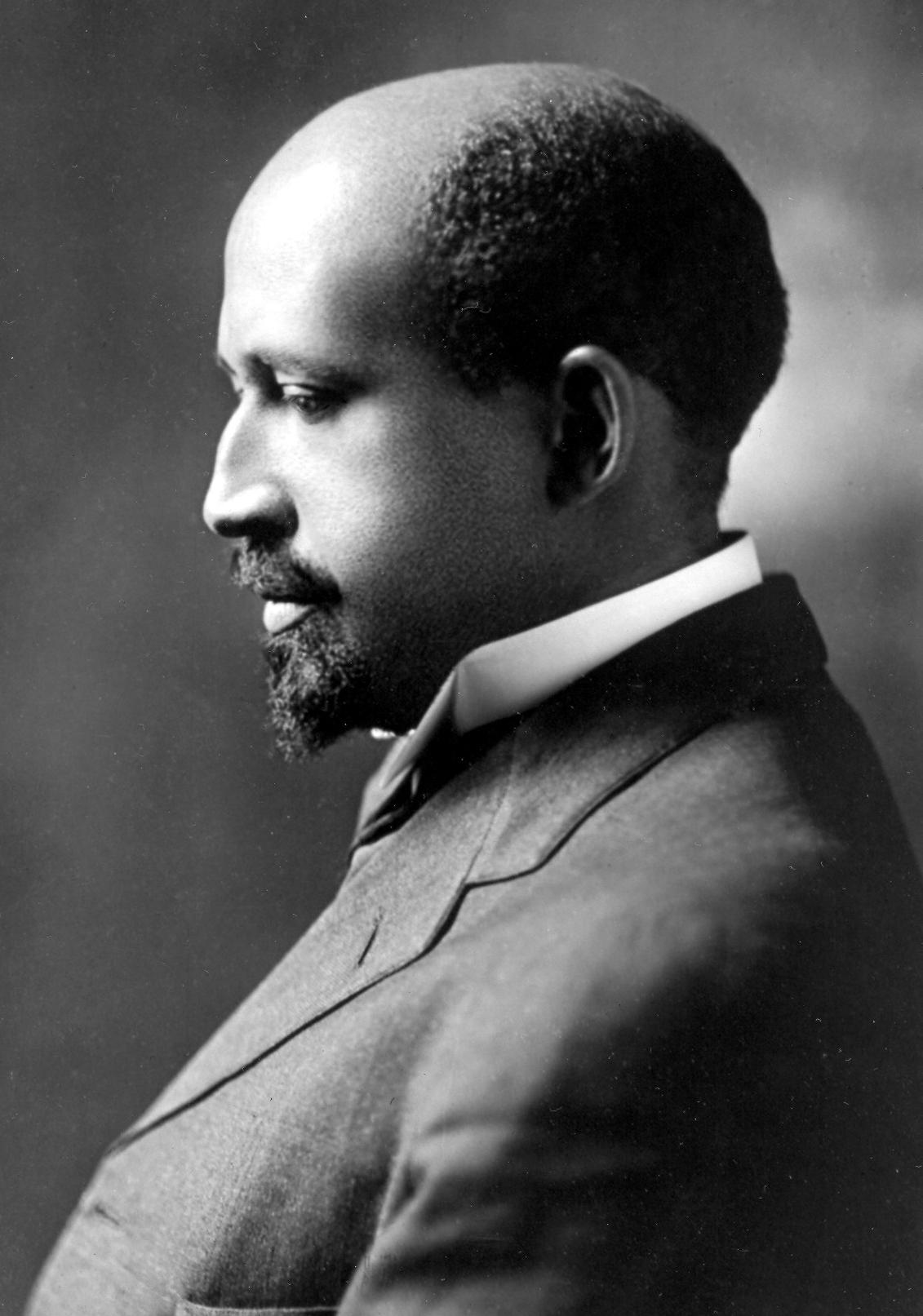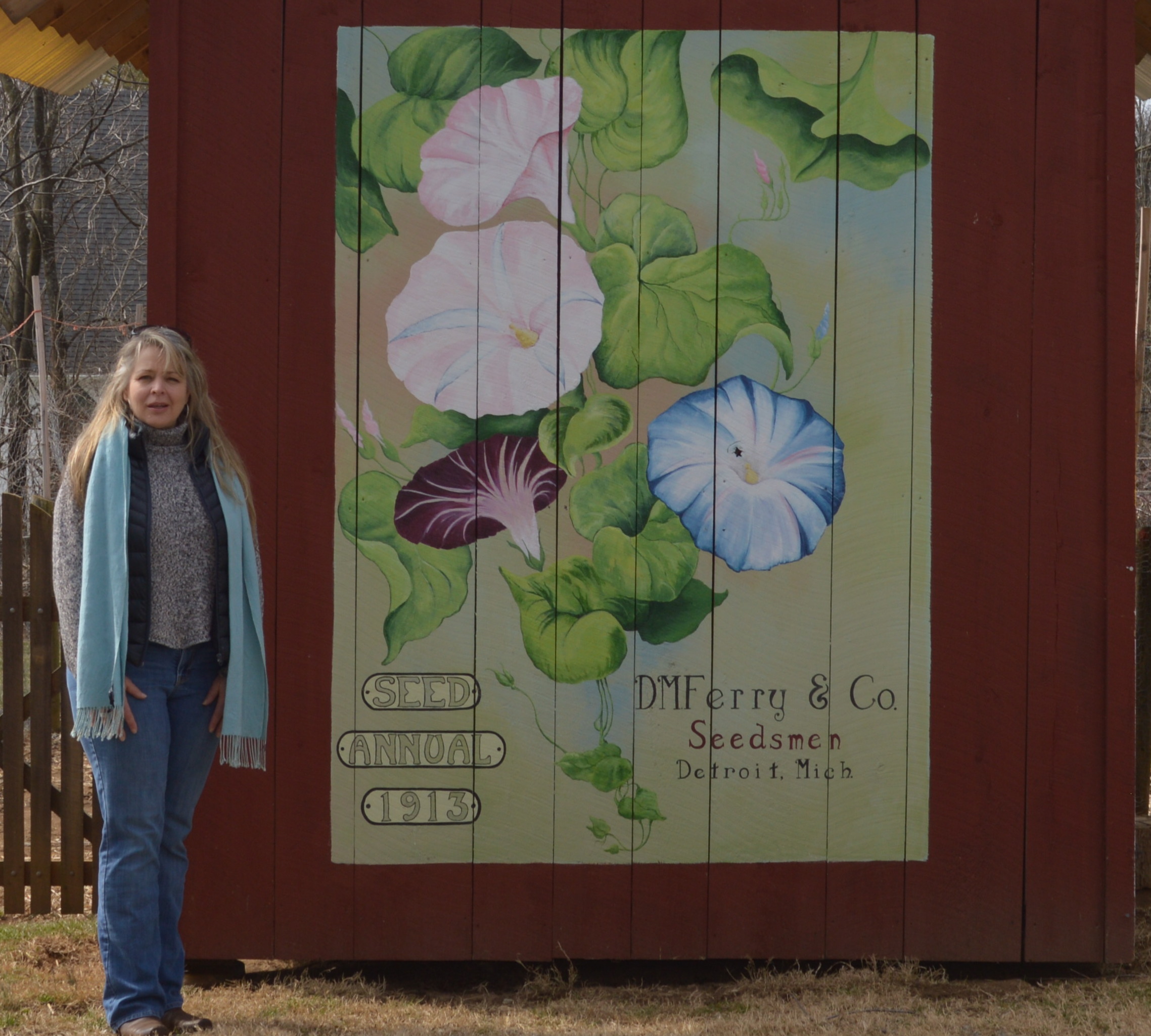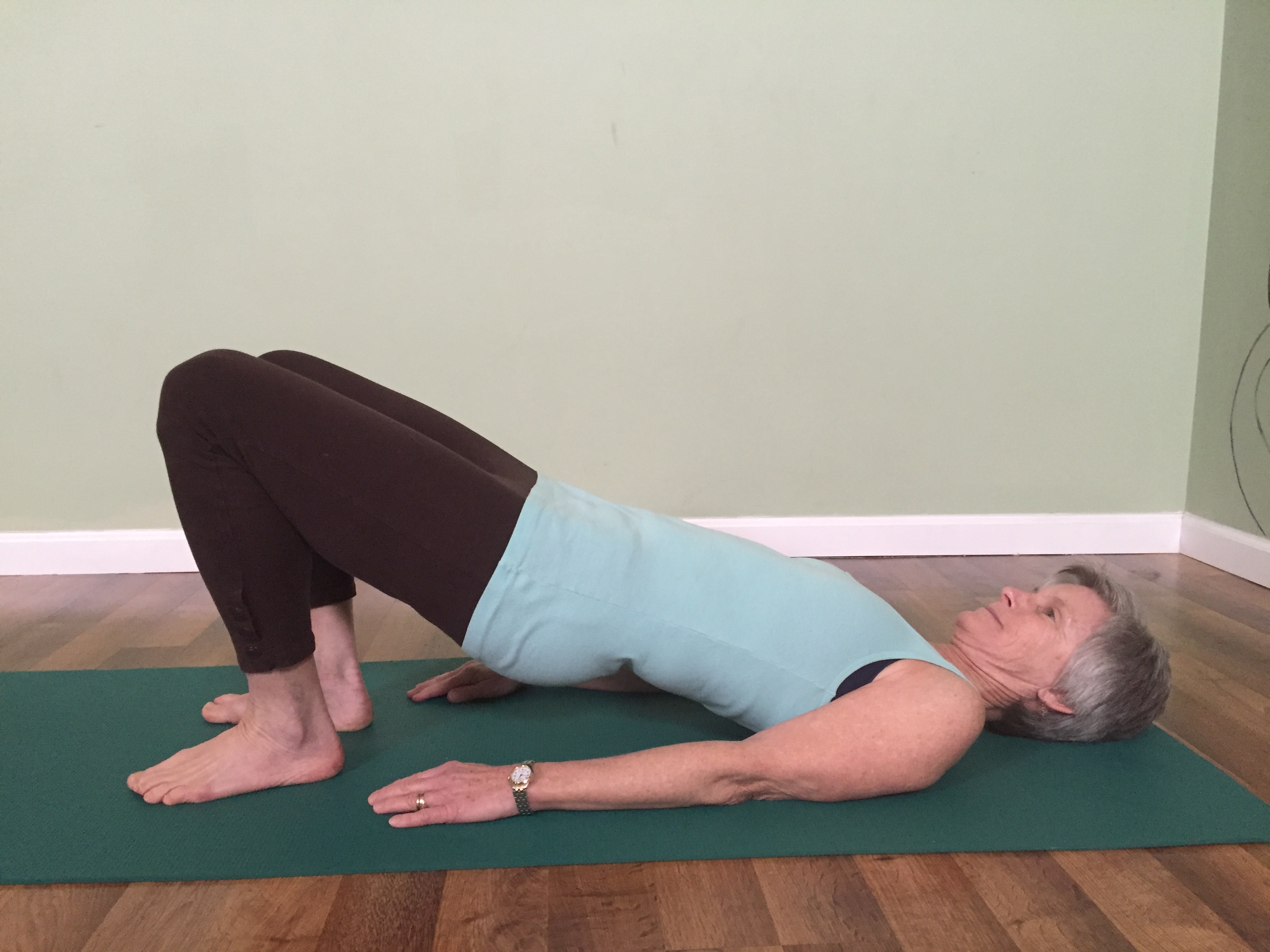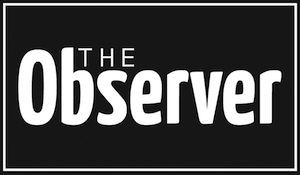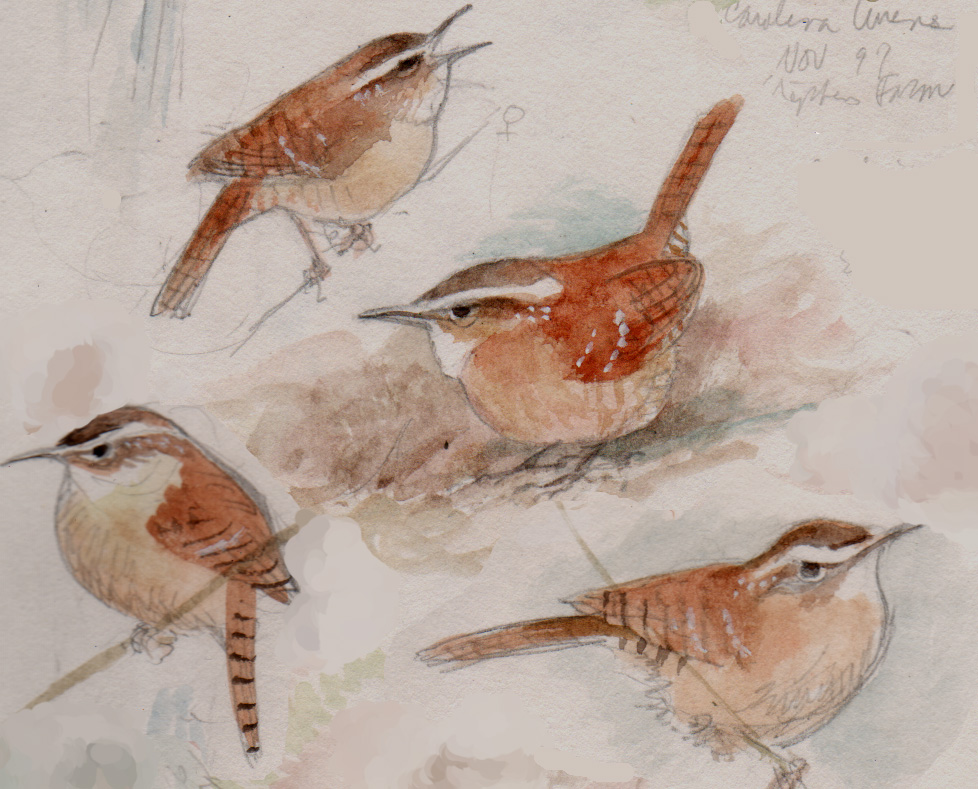Posts
Education As An Instrument Of Equality
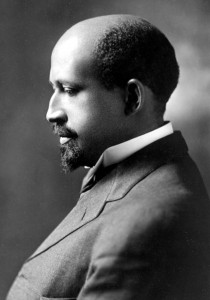 How the Feud Between W.E.B DuBois and Booker T. Washington shaped education
How the Feud Between W.E.B DuBois and Booker T. Washington shaped education
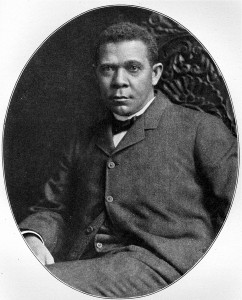 Booker T. Washington was born in slavery. After emancipation, he attended the Hampton Normal and Agricultural Institute (now Hampton University), then an agricultural training program for black people. Washington’s political views were gradualist: he wanted racial equality, but he did not think that black people were educationally advanced enough to compete with white people in classical liberal arts settings. Thus, he preferred they gain equality through learning a trade and becoming economically independent, and gradually integrating into society. He became president of the Tuskegee Institute in Alabama in 1881 with the intention of acting on his vision.
Booker T. Washington was born in slavery. After emancipation, he attended the Hampton Normal and Agricultural Institute (now Hampton University), then an agricultural training program for black people. Washington’s political views were gradualist: he wanted racial equality, but he did not think that black people were educationally advanced enough to compete with white people in classical liberal arts settings. Thus, he preferred they gain equality through learning a trade and becoming economically independent, and gradually integrating into society. He became president of the Tuskegee Institute in Alabama in 1881 with the intention of acting on his vision.The Micro and Macro Worlds of Julie Miles
 By Claire Stuart
By Claire Stuart
Living with Back Pain
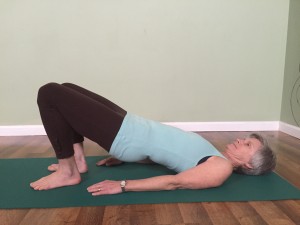 Try Low-Tech to Move Through It
Try Low-Tech to Move Through It
 Cobra pose
Cobra pose Child’s pose
Child’s poseThose who experience muscular pain, joint pain, and other aches might find some relief by eliminating foods that are known to cause inflammation. If total elimination looms too large to tackle, think of a gradual approach by choosing a food, or food category, from the list below to eliminate for just one week. See how you feel; then try cutting out another one the following week.
Common inflammatory foods
More Natural Healing Techniques
Around Clarke County March/April 2016
 March
March
12
Blue Ridge Hunt
Point to Point Races. 490 Woodley Lane. Berryville. 67th running. Welcome in spring with the first race of the season at the lovely Woodley Farm. Gates open at 10:30am. Post time 12 Noon. 11 races. General Admission is $20/Car. For more information or to reserve front row parking call Jenny Irwin at (202) 664-4664.
16
Pruning Small Trees
Blandy Experimental Farm. The State Arboretum of Virginia. 400 Blandy Farm Lane. Boyce. 1–3 pm. Scott Johnston, ISA Certified Arborist. This workshop begins with an introduction to proper pruning and tree care. We will then go outside for demonstrations and hands-on practice, with plenty of time for Q and A. Dress for the weather. FOSA members $10. nonmembers $12. For information call 540-837-1758 Ext. 226 or visit http://blandy.virginia.edu.
17
Trivia Night
with the Clarke County Historical Association. Barns of Rose Hill. 95 Chalmers Court, Berryville. Doors open at 6pm. Event starts at 7. How smart do you think you are? Grab your thinking cap and a few friends and come join us the night of St. Patrick’s Day for the Clarke County Historical Association’s second-ever trivia tournament! Categories will once again include History, Literature, Virginia, Science, and Television. Prizes will go to the top three teams and there will be raffles between rounds. Funny team names are encouraged! $5 for CCHA and BORH members. $8 for non-members. For more information visit www.barnsofrosehill.org.
18
-20 CCHS Spring Musical
“Oh, the thinks you can think!” CCHS Auditorium. 627 Mosby Blvd, Berryville. 7:30pm Friday and Saturday and 2:30 Sunday. Mark your calendars for the 16th annual CCHS Spring Musical as we take a journey into the whimsical world of Dr. Seuss with Seussical the Musical! Make plans to come hang out with The Cat in the Hat, Horton the Elephant, Gertrude McPhuzz, JoJo, Mayzie Le Bird, and a host of crazy Seuss characters! Tickets are $12 for adults and $6 for students. Contact Andy Kiser, Artistic Director, at 540-955-6130 x.7446 for additional information.
18
Berryville Drum Circle
My Neighbor and Me. 15 E. Main Street. Berryville. 7–8:30pm. Free. Leader: Jona Masiya. 540-955-8124. www.myneighborandme.com.
19
Summer Camp Fair
Alamo Drafthouse Cinema. 181 Kernstown Commons Blvd. Winchester. 9am–12:30pm. Learn about a variety of camps and programs available at this integrated summer camp fair. Participants will have several chances to win great prizes. Prize packs include complimentary admission to local pools and museums, movie tickets with popcorn, river tubing passes, discounts off camps and more valued over $400! Shenandoah Valley Kids Trail and Alamo Drafthouse Cinema will have their prize wheels to spin for more prizes and giveaways. Free admission and children’s activities. For more information call Tracey Pitcock at 540-955-5149 or email tpitcock@clarkecounty.gov.
19
Squirrels
Love’em or Leave’em. Blandy Experimental Farm. The State Arboretum of Virginia. 400 Blandy Farm Lane. Boyce. 2–4 pm. Love them or not, everyone has a squirrel story: their playful antics, or how they eat your bird seed or dig in your garden. This family event begins with a short illustrated talk that includes squirrel crafts, games, and activities and ends with observation of Blandy’s squirrels. For the whole family, but no dogs please. FOSA members $10. nonmembers $12. Member family $20. Nonmember family $25. For information call 540-837-1758 Ext. 226 or visit http://blandy.virginia.edu.
19
Soup and Sandwich Luncheon
Boyce Volunteer Fire Company. 7 S. Greenway Ave. Boyce. 11am–1:30pm. Free will offering to benefit Relay for Life of Clarke County. Sponsored by Stepping Stones Community Action Team.
19
Watercolor Workshop
with Julie Read. Fire House Gallery. 23 E. Main Street. Berryville. 9am–12pm. Back by Popular Demand! Learn from a master. Each of Julie’s watercolors tells a story with their tone, perspective, and subject matter. Her paintings include incredible scenes of flowers grown in her garden, pigs, whimsical chickens, cows, lovely local landscapes, and trees. $40 includes materials, but 2 brushes needed, and feel free to bring your own paints! To sign up and get more info, please email info@firehousegalleryva.com or call 540 955 4001. Spaces are limited!
19
Prize Bingo Fundraiser
John H. Enders Fire Hall, 9 S. Buckmarsh St, Berryville. Doors open at 1pm and Bingo starts at 2. Event benefits the non-profit Blue Ridge Center for Therapeutic Horsemanship. $20 in advance. $25 at the door. 14 prize-filled games. Raffles for very special Thirty-One prize, 50/50, and themed baskets. Chili, snacks and beverages available. Proceeds will provide scholarships for students with special needs and funds to help care for our therapy horses and ponies. Tickets can be purchased online at marchbingofundraiser.bpt.me or by contacting us at 540-533-2777 or brcthinc@hotmail.com.
20
Guild of Fabric Artists
Clarke County Parks and Recreation. 225 Al Smith Circle. Berryville. 2–4pm. Designed to support and facilitate the creation and exhibition of members’ fabric art. A different study, will be explored each month. Everyone will be asked to show & tell about works in progress and completed work. $1. Ages 18 and up. Leader: Joyce Badanes. For information call 540-955-5140.
20
Corda Nova Baroque
Barns of Rose Hill. 95 Chalmers Court, Berryville. Doors open at 3pm. Show starts at 4. Corda Nova Baroque is an early music ensemble that focuses on bringing lesser known Baroque works to wider audiences in a historically informed manner. Corda Nova Baroque‘s successful first season included programs of German Stylus Fantasticus works and Italian sonatas in Washington DC, Middleburg, VA and Philadelphia. The ensemble’s second season included performances with soprano Rebecca Mariman and French Baroque selections performed in Washington DC, Princeton NJ, and the group’s New York City debut on the GEMS Midtown Concert Series. $20 in advance. $25 at the door. For more information visit www.barnsofrosehill.org.
22
Why Poverty?
Documentary night at My Neighbor and Me. 15 E. Main Street. Berryville. Film “Stealing Africa”. One hour film followed by group discussion. 7–9pm. Free. Leader: Christina Kraybill. 540-955-8124. www.myneighborandme.com.
23
Volunteer Training
for Therapeutic Riding. Blue Ridge Center for Therapeutic Horsemanship. 644 Lime Marl Lane. Millwood. BRCTH invites enthusiastic and caring individuals to become lesson volunteers for 8-week spring session which begins the week of April 11. Must be at least 14 years of age. Equine experience required for the position of horse leader, and is preferred, but not required for side-walkers. Trainees attend Orientation at 6pm on Weds, March 23, and then one of several hands-on trainings being offered over next several days. Contact Margie Youngs at brcthinc@hotmail.com or at 540-533-2777.
23
Full Moon Walk
Blandy Experimental Farm. The State Arboretum of Virginia. 400 Blandy Farm Lane. Boyce. 7:30–9 pm. Explore the Arboretum under the full moon. Wear comfortable shoes, bring a flashlight, and explore the natural world at dusk and after dark. FOSA members $10. nonmembers $12. Member family $20. Nonmember family $25. Reservations Required. For information call 540-837-1758 Ext. 226 or visit http://blandy.virginia.edu.
26
Community Health Forum
Living and Dying with Our Choices: Community Impact of Risk Behaviors and Narcotics. The presentation will take place at 10:30am and will be followed by a question and answer period with our panelists.
26
Easter Shop and Hop
Participating Retail Stores. Downtown Berryville. Join Berryville Main Street and participating Berryville merchants for our first Easter Shop and Hop! 11am–4pm. Mom can shop and kids can look for hidden eggs with special letters in them. When all the letters collected spell EASTER, the kids can come down to the Firehouse Gallery to receive their prize! Participating merchants are The Firehouse Gallery, Modern Mercantile, My Neighbor and Me, Sweetpea’s, Berryville Treasures, Blue Ridge Hospice Thrift Store, and Berryville Auto Parts. For info call Berryville Main Street, 955-4001.
27
Pancake Breakfast
John H. Enders Fire and Rescue. 9 South Buckmarsh Street, Berryville. 7am–12 noon. Come Support your fire and rescue squad and enjoy the finest Pancake Breakfast in the area! Pancakes, Sausage, Eggs, Sausage Gravy, Baked Apples, Coffee, Milk, Hot Tea, Apple & Orange Juice. Adults $8. Children $4. Children under six eat for FREE. For Information Call 540-955-1110 or visit www.endersfire.com.
28
Food Drive
Through April 8. Clarke County High School. 627 Mosby Boulevard, Berryville. Join the Clarke County High School Student School Climate Committee in a Fill the Bus Food Drive to benefit FISH. Bring donations to the main office at Clarke County High School to help fill the bus! The bus will be packed on April 8. Contact Joanne Wolfe at wolfejo@clarke.k12.va.us or 540.955.6130.
April
2
Mark and Maggie O’Connor-American Classics
Barns of Rose Hill. 95 Chalmers Court, Berryville. Doors open at 7pm. Show starts at 8. Don’t miss Grammy-winner Mark O’Connor and his wife, Maggie, as they perform a broad and interconnecting collection of American music through violin solos and duos. American Classics identifies the cornerstones of repertoire, style and wonderful diversity of A New American School of String Playing. $20 in advance. $25 at the door. For more information visit www.barnsofrosehill.org.
5
Why Poverty?
Documentary night at My Neighbor and Me. 15 E. Main Street. Berryville. Film “Education, Education”. One hour film followed by group discussion. 7p-9p. Free. Leader: Christina Kraybill. 540-955-8124. www.myneighborandme.com.
6
Arboretum Walking Tour
Blandy Experimental Farm. The State Arboretum of Virginia. 400 Blandy Farm Lane. Boyce. 2–3:30pm. Come enjoy flowering trees, shrubs, and wildflowers in all their spring glory! Dress for the weather. Free, but Reservations Required—Space is Limited. For information call 540-837-1758 Ext. 226 or visit http://blandy.virginia.edu.
7
BuzzWords Trivia Night
Handley High School’s Patsy Cline Theater. Hosted by Literacy Volunteers of the Winchester Area. 6:30pm. LVWA offers ESL, computer and basic literacy classes for adults in the Clarke/Frederick area. For more information please visit LVWA.org.
9
Berryville Yard Sales
Downtown Berryville. Rain Date is Saturday, April 16.
9
/10 Estate Sale
Barns of Rose Hill. 95 Chalmers Court, Berryville. Second annual “Estate Sale Fundraising event– Fine Art and Home Furnishings” at the Barns. People may consign their artwork, antiques, furniture and home furnishings, or they may want simply to donate a good item to help the Barns raise funds. Items must be clean and in good repair. Suitable items include antiques, fine textiles, silver, china, original works of art, furniture in good repair, lamps, statuary and jewelry. All items must be delivered to the Barns. Barns staff will be accepting items beginning Saturday, April 2. Complete information is available at barnsofrosehill.org, or by calling 540-955-2004 between noon and 3PM, Tuesday through Saturday.
9
Kathy’s Art and Spring Dinner
Crums United Methodist Church. 2832 Crum’s Church Rd. Berryville. Join us in support of Kathy Hopson. A very courageous woman battling a mix Oglioastrocytoma, who discovered painting as an outlet for recovery. Presented by the Crum’s United Methodist Women. Free Will Offering Dinner 5–6:30pm with Silent Auction and Sale ending at 7:30pm. Cash or good check. Donations or questions please contact Shawn Nicholson at forothers@rocketmail.com.
9
Book Talk
with the Clarke County Historical Association by Historian John R. Maass: The Road to Yorktown.
Barns of Rose Hill. 95 Chalmers Court, Berryville. 2pm. Join us as military historian John R. Maass discusses his recent book – The Road to Yorktown: Jefferson, Lafayette and the British Invasion of Virginia – which explores the 1781 British invasion of central Virginia in the campaign leading up to the Siege of Yorktown in October 1781. $3 for BORH and CCHA members. $5 for non-members. For more information visit www.barnsofrosehill.org.
9
Joan and Joni
A tribute to Joan Baez and Joni Mitchell. Barns of Rose Hill. 95 Chalmers Court. Berryville. Doors open at 7pm. Show starts at 8. Joan & Joni is a tribute to Joan Baez and Joni Mitchell performed by singer/songwriters Allison Shapira and Kipyn Martin. Allison and Kipyn are both classically trained musicians from the DC-area folk music scene. In Joan & Joni, Allison and Kipyn bring to the stage many of Joan Baez and Joni Mitchell’s well-known originals and folk songs, as well as a few hidden gems. They also highlight the impact these legendary women have had on their own songwriting and performance. $15 in advance, $20 at the door. For more information visit www.barnsofrosehill.org.
14
Benefit Fashion Show
What Goes Around, Comes Around! Barns of Rose Hill. 95 Chalmers Court, Berryville. 6:30pm. This fashion show will take you back in time through current fashions with a comparison of what we’re wearing now with possibly what your mother or grandmother wore many years ago as their own current fashion. The memories of the slideshow will take you down memory lane while the models on the runway bring you back to the 21st century with a feeling of nostalgia. “Fashion has always been a repetition of ideas, but what makes it new is the way you put it together” Carolina Herrera, designer. Fashions will be provided by Chico’s of Creekside. There will be a Silent Auction, cash and checks only, to benefit The Clarke County Humane Foundation. Donation of items to the Animal Shelter are also welcome. Tickets are $12 in advance, $15 at the door, $10 for students. For more information or tickets please call 540-955-2004, or visit www.barnsofrosehill.org.
15
Rhythm Future Quartet
Barns of Rose Hill. 95 Chalmers Court. Berryville. Doors open at 7pm. Show starts at 8. The acoustic jazz ensemble, Rhythm Future Quartet, has a straightforward agenda: to keep the spirit of Gypsy jazz alive and expanding in today’s musical universe. The virtuosic foursome, named for a Django Reinhardt tune, offers up a newly minted sound, influenced by the classic Hot Club of France, yet wholly contemporary. Led by violinist Jason Anick and guitarist Olli Soikkeli, the quartet performs dynamic and lyrical arrangements of both Gypsy jazz standards and original compositions that draw upon diverse international rhythms and musical idioms. With Max O’Rourke on second guitar and Greg Loughman on bass, Rhythm Future is dedicated to expanding the boundaries of a vital musical genre. $15 in advance, $20 at the door. For more information visit www.barnsofrosehill.org.
15
Mindfulness in Nature
Guided Walking Meditation. Blandy Experimental Farm. The State Arboretum of Virginia. 400 Blandy Farm Lane. Boyce. 6:30–8:30pm. Shell Fischer, Insight Meditation Instructor. Learn to slow down and draw on nature through guided meditation, silent walking, and reflection. Dress for the weather. Ages 16 and older. FOSA members $10. Nonmembers $12. Reservations Required. For information call 540-837-1758 Ext. 226 or visit http://blandy.virginia.edu.
16
Cash Party
John Enders Fire Hall. 9 South Buckmarsh St., Berryville. Doors open at 5:30. Crazy Cash Party and BBQ Dinner. Grand Prize $1500. Only 275 tickests. Call 540-955-1110 or email secretary@endersfire.com.
How do you know when it’s time to hang up your driver’s license?
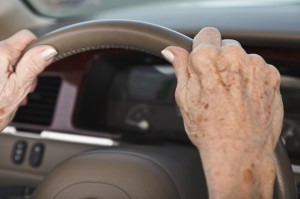 By Karen Cifala
By Karen Cifala
Any of these sound familiar? From what I’ve learned a self-assessment is always a good place to start. Ask yourself “Am I still a safe driver”? If you can answer “yes” to any of the following, then a follow-up may be needed to ensure safe driving. Virginia GrandDriver website offers the following signs for self-assessment: Have you ever …
- Suffered a stroke, heart attack or diminished eyesight?
- Experienced difficulty in negotiating sharp turns and intersections?
- Hesitated over right-of-way decisions or situations you once took for granted?
- Been surprised by the sudden presence of other vehicles or pedestrians?
- Received negative feedback from other drivers?
- Become lost on familiar routes?
- Felt nervous or exhausted after driving?
- Been cited for traffic violations or found at fault in crashes?
Clarke County offers several transportation assistance options if you don’t have a caretaker or family member that can drive you to an appointment. Plus it might give you a chance to get out and socialize a bit as well as continue to help yourself maintain your independence. It’s never too late to try something new.
The New Career and Technical Education
C&T program brings opportunities for Clarke County students
By Jess Clawson
This month begins a series examining career and technical education in the U.S. in order to help readers more fully comprehend the significance and potential impact of the new programs in Clarke County High School. This installment provides an overview of new local career and technical education initiatives. The next two months will give an overview of the history of vocational training, with insights into the progress of the programs at CCHS. Jess Clawson has a PhD in education history from the University of Florida.
Educators everywhere are concerned about improving the academic performance of students who struggle to achieve in schools, as well as the career and higher education outcomes for high school graduates. Clarke County Schools Superintendent William “Chuck” Bishop is no different. In the December school board meeting, he announced plans for Clarke County High School to begin a career and technical education program for CCHS students.
Clarke County High School has always had courses that filled the CTE role, and this year is incorporating a work-based learning program in partnership with local businesses and industry leaders. Clarke County High School Principal Dana Waring and Director of Curriculum and Instruction Cathy Seal have examined industry data to provide opportunities for students in fields that are hiring.
Twenty students this year will have the opportunity to work with professionals in their area of career interest. “Students will be able to meet with and observe whatever experience comes from those community partners, to determine whether it’s something they want to do and pursue,” says Waring. “For instance, the student who wants to be a physical therapist might realize ‘this might not be for me,’ and those experiences are just as valuable.”
Local business owners who are willing to let students shadow them can offer a variety of experiences to help the students confirm or deny their initial interest in the field. The school is working with about twenty participating businesses covering a wide array of interests, from exotic veterinarians to CPAs to agricultural businesses. They are hoping to expand into opportunities in food service, as well as locations in Winchester, particularly the Old Town Mall.
The degree of hands-on experience varies by placement. For instance, Seal says, a student interested in construction may not be able to do much on the site because of their age, but someone interested in architecture may get to learn how the software works. “They are going to be spending a significant number of hours with the employer in the field,” according to Seal. “We’ve left it wide open, so kids who are involved in sports and extracurriculars can tailor the program to meet their scheduling needs.”
The initiative at CCHS has two major partnerships: Valley Health and Lord Fairfax Community College. Students at CCHS can get their Certified Nursing Assistant credential, and each year three students in the nurse aid program have the opportunity to do a paid internship with Valley Health. This provides economic opportunity, as the pay starts at $15/hour, and supports their college application materials. Prior to placement, they will have completed coursework and other clinical experience like visits to the local nursing home. According to Waring, “the vast majority of [CNA] students go into nursing.”
The cooperation with LFCC will expand upon the hands-on technical education CCHS offers. The local high school may not have the equipment available to give students the chance to learn about things like HVAC, electrical work, or welding. Through their work with LFCC, students will get two certifications and a college credit.
The partnership with LFCC is a consortium agreement and will include students from Warren, Frederick, and Winchester schools, along with Clarke County. Lord Fairfax will take 15 students combined, and CCHS has been allocated three spots. As the program evolves, more spots may become available and more programs offered.
Seal sees this as a tremendous opportunity for students: “Being the size that we are with one high school and a little over 700 students, we have to look to those community partnerships and opportunities that are available, because we can’t offer the variety of pathways and the variety of course offerings within this building,” she says. “We don’t have staff, we don’t have budget, we don’t have space. So that partnership with Lord Fairfax and that partnership with Valley Health is a good attempt to provide kids career exposure.”
Some opportunities for dual enrollment with Shenandoah University are also possible for students, particularly through the sports medicine course at CCHS. The course, taught by sports trainer Lindsey Greigo, is a daily block class with high medical terminology that Waring describes as intense and challenging.
The state is putting increased focus on career and technical education, including widening its reach into middle school. Eighth grade students are meant to have a career pathway document completed with the assistance of a guidance counselor to bring with them to high school. This helps Waring and the high school counselors assist them in choosing the appropriate coursework.
Seal believes this effort should be moved into the elementary division. “We certainly know kids aren’t going to decide in fifth grade what they’re going to be for the rest of their lives,” she says, “But if we can help them start to understand what their strengths are and what they’re naturally interested in and guide them down that path, it would be really helpful.” Seal is part of the Top of the Valley Regional Chamber Committee, and as a function of work on the strategic plan, proposed a project to get fourth and fifth grade students exposed to more career and industry pathways. While teachers might bring architects or other professionals to their classes to talk to students, the entire school is not necessarily exposed to those ideas. “We need to firm up more consistent efforts for kids to realize the vast array of careers,” Seal says.
The school system is doing more career exploration at earlier ages. In the fall semester, for instance, all of the seventh grades in Clarke County, as well as surrounding counties, went to the sports complex in Winchester for a middle school-appropriate career fair. Students would go through the fair and do activities that simulated work in the field. As Seal described it, “They didn’t have a firefighter talking to them about what it was like to be a firefighter…They actually suited up and went through a tunnel that was like a smoke/heat simulation to see what it was like.”
Beginning with the graduating class of 2017, all Virginia students on a standard diploma need a CTE requirement, but are not actually required to take CTE courses. This requirement is fulfilled through a standardized CTE exam. “The interesting piece to me is that they did not mandate that you have to take a CTE course,” says Seal. “They just said you have to pass the test. So I think they have some work to do in that area.” Clarke County will mitigate this problem through having all students take economics and personal finance—also mandated by the state—and using the accompanying standardized exam as their certification.
Subsequent installments will cover more details of the CCHS CTE initiative as well as the historical background that gives context to the local innovations. Next month, the history of Reconstruction and the debates over black education will feature the Josephine School Museum and its place in the vocational versus classical liberal arts education debates.
A Bird In The House
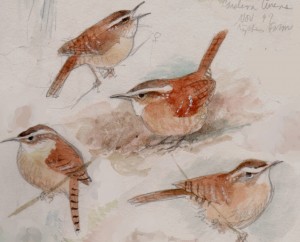 An adventure with a Carolina wren, a kitchen in winter, and bright white pied piper
An adventure with a Carolina wren, a kitchen in winter, and bright white pied piper
Story and illustration by Doug Pifer
A Carolina wren got into the kitchen. We found it fluttering against the window pane when we came down for coffee this morning.
My wife, who has quicker reflexes than I, tried to quietly catch the bird so we could let it outside. She had it in her cupped hands but it managed to escape through a small space between two of her fingers and flew to the top of the kitchen cabinet. There it stopped to rest, panting with stress.
When a bird gets into the house, the best way to get it out is to open a door or window and leave the room so the bird can find its way out calmly on its own. But this was a twenty-five degree Sunday morning in January and we didn’t want to lose all the heat in the kitchen. And I didn’t want to stress the bird further by chasing it around.
The way outside was down a set of stairs through the cellar way. And to put as much distance between itself and danger as possible, a bird usually wants to fly up, not down. To solve the problem I went to the studio and found a white, 20 by 30 inch canvas stretched on a wooden frame. By the time I returned to the kitchen the wren had flown to the brick wall above the kitchen door. So far, so good.
Very slowly I opened the door and sneaked back up the stairs while the bird quietly watched from its safe perch. I continued to move slowly. I picked up the canvas and raised it as high over my head as I could without waving the canvas around. The bird calmly moved down the brick wall towards the door. Continuing to hold the canvas still, I slowly moved down the stairs. The bird hitched its way toward the open space below and quickly flew out, heading towards the woods across the paddock.
The wren was apparently none the worse for its experience other than the loss of a few tail feathers. We found the feathers behind some plants on the window sill. Our cat had evidently pounced on the bird when it came in, knocking the pots in disarray. Cleaning this mess up, I also discovered how the bird had gotten into the house. Between the brick wall and the window frame was a small hole, through which I could see outside. Thanks to that Carolina wren, we’ve discovered part of the heating problem in the kitchen!
Living in old farm houses for many years, my wife and I have had our share of visits by birds. Chimney swifts and starlings enter through the chimney, usually by accident. Wrens come in voluntarily, following their mouse-like tendency to explore dark crevices. Other birds fly in through an open door or window. While we’re honored to have them, we realize they probably don’t want to be there. We help them escape as soon as possible. And in every instance we’ve been able to learn something new about the birds.
Some people believe a bird in the house is a bad omen or are afraid of birds. However you feel about this, move slowly and be aware a bird will panic if it feels trapped! To resolve things with minimal stress just open a door or window, then take yourself, family and pets elsewhere, and relax. The bird will probably find its own way out in a very short time.
In Memory: JoAnna Williams Schulz
 This is the day the lord has made; we will rejoice and be glad in it. — Psalm 118:24
This is the day the lord has made; we will rejoice and be glad in it. — Psalm 118:24
On Sunday, January 3, family and friends gathered to share the life of JoAnna Williams Schulz. If it wasn’t clear before, it couldn’t be missed after … JoAnna loved fiercely and was fiercely loved.
“Beginnings are scary, endings are very sad; it’s everything in between that makes it all worth living.” — Sandra Bullock, Hope Floats
JoAnna didn’t have an easy life, but she had a lot to live for. Her brothers shared of a family divided, but bound by a deep unspoken love. For JoAnna, she found her emotional voice with the love of her life, JD. Their union created two precious children, Alecia and Ted.
“This is one of the miracles of love: It gives a power of seeing through its
own enchantments and yet not being disenchanted.” — C.S. Lewis, A Grief Observed
JD’s too soon departure left a great void in their small woven tapestry. With determination and without complaint, JoAnna raised her children to fly on their own, never missing a chance to encourage, prod, redirect, cheer on…or laugh. JoAnna knit together a family, not just by blood, but in community. Her laughter, her joy in friendship and family, her faith will be missed…but it lives on in those who shared her life. Everything in between is what makes life worth living and meant everything to JoAnna! She was loved deeply and will be missed fiercely. Through JoAnna we found it is okay to say “I Love You”!
“What we once enjoyed and deeply loved we can never lose, For all that we love deeply becomes a part of us.” — Helen Keller


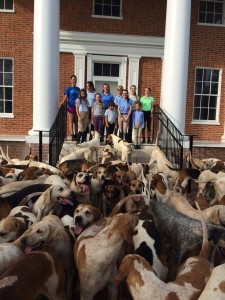 Pony Club teaches youth horsemanship, responsibility, teamwork
Pony Club teaches youth horsemanship, responsibility, teamwork